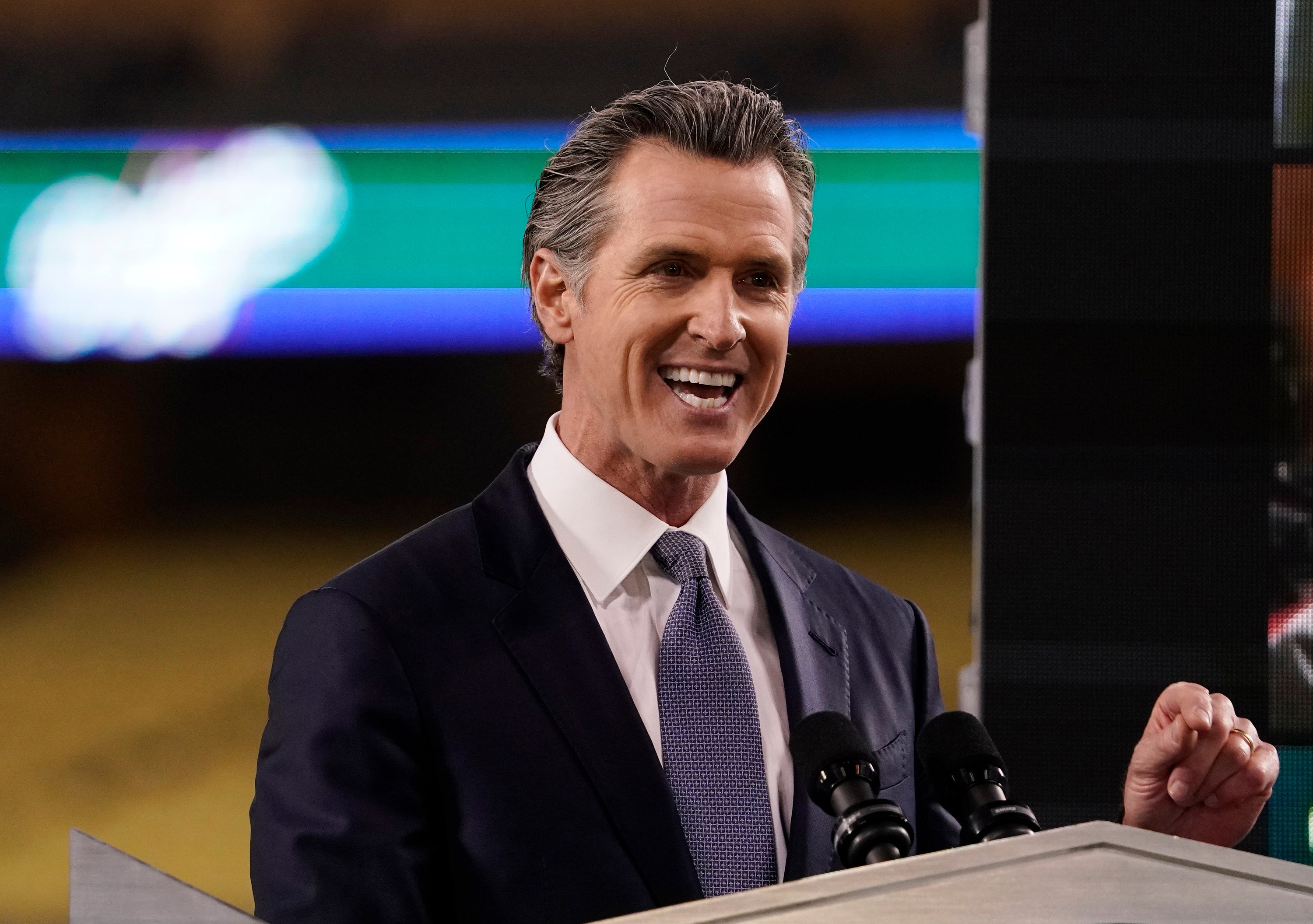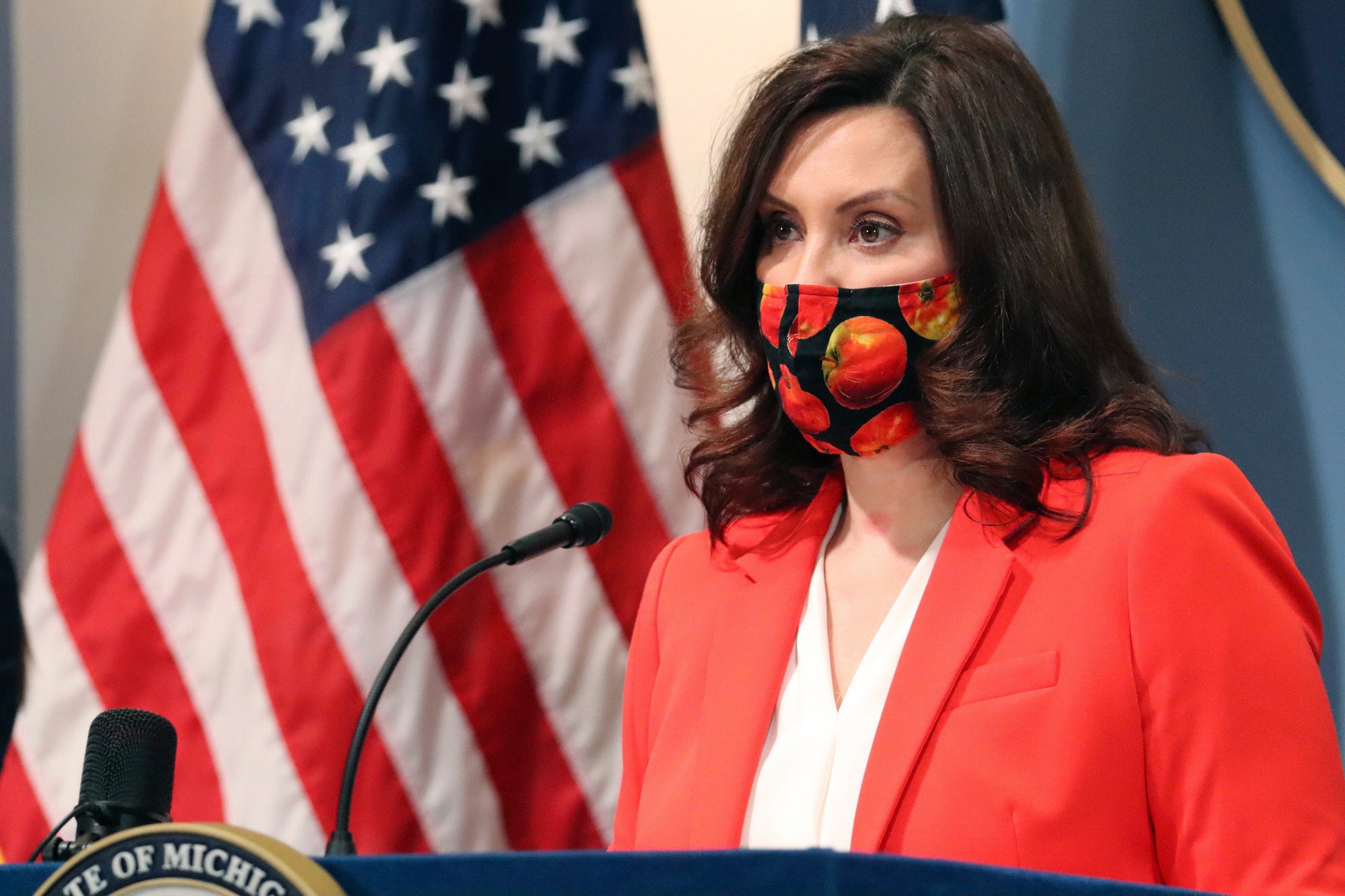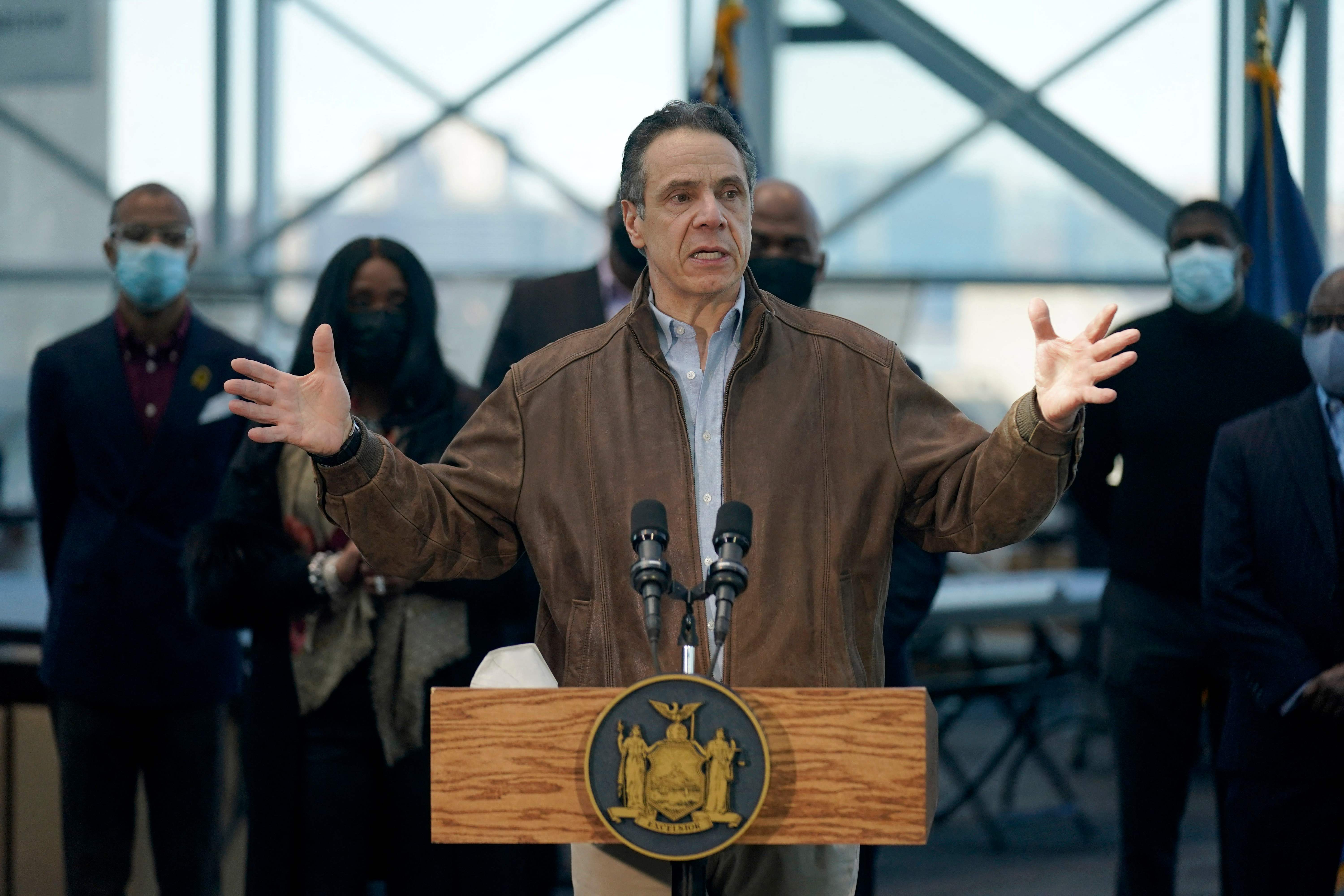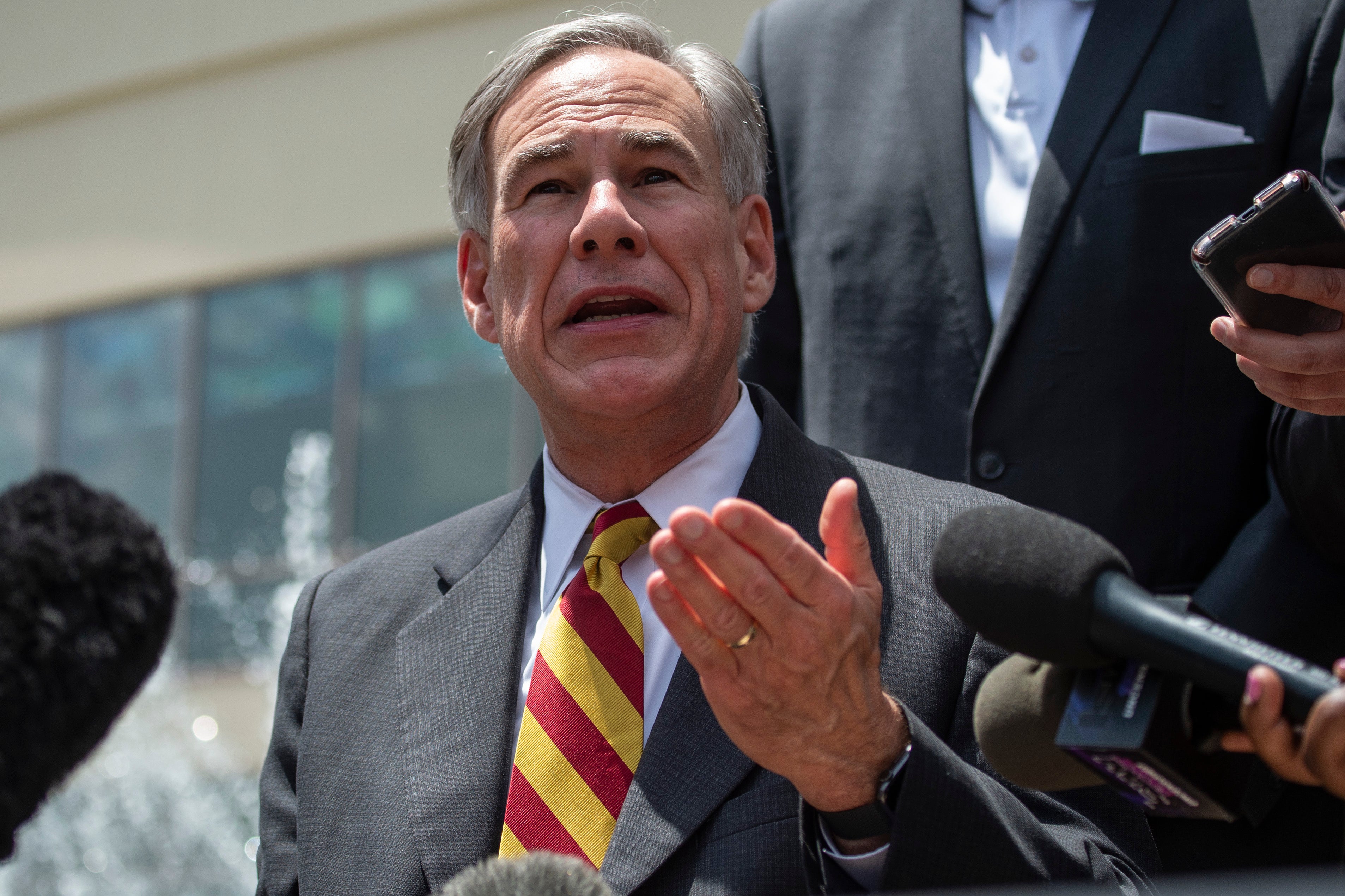Covid rules by state: What restrictions are in place?
Coronavirus regulations can differ drastically across America, often depending as much on whether the state in question has a Democrat or Republican governor as how severe the outbreak has been locally
Your support helps us to tell the story
From reproductive rights to climate change to Big Tech, The Independent is on the ground when the story is developing. Whether it's investigating the financials of Elon Musk's pro-Trump PAC or producing our latest documentary, 'The A Word', which shines a light on the American women fighting for reproductive rights, we know how important it is to parse out the facts from the messaging.
At such a critical moment in US history, we need reporters on the ground. Your donation allows us to keep sending journalists to speak to both sides of the story.
The Independent is trusted by Americans across the entire political spectrum. And unlike many other quality news outlets, we choose not to lock Americans out of our reporting and analysis with paywalls. We believe quality journalism should be available to everyone, paid for by those who can afford it.
Your support makes all the difference.New US president Joe Biden has made a brisk start to life in the White House since succeeding Donald Trump on 20 January 2021, prioritising bringing the deadly coronavirus pandemic under control by rolling out vaccines and signing into law Congress’s new $1.9trn Covid stimulus bill to jump-start the economy.
But with social restrictions, capacity allowances and face mask rules all slightly different across the land, the ever-changing expectations on citizens can be confusing.
Taking it state-by-state like Sufjan Stevens (only hopefully getting a good deal further through the project than he ever did), here’s an overview of US coronavirus restrictions in place from Alabama to Wyoming.
Alabama
Masks are still mandatory in the Cotton State but businesses are largely open: retail premises, restaurants and bars, salons, churches, entertainment venues and outdoor recreation facilities are all available. Republican governor Kay Ivey also recently lifted some restrictions on nursing homes and senior citizen centres.
Alaska
The northwestern state saw a marked spike in cases in November and December but its emergency declaration expired last months, meaning the wearing of masks in public is not compulsory and most businesses are open.
Arizona
Masks are required while on most business premises in the Grand Canyon State and shops, restaurants, barber shops, churches, cinemas, casinos, swimming pools, spas and gyms are all open, although bars and nightclubs are currently closed.
Arkansas
Republican governor Asa Hutchinson originally opted to close businesses rather than issue a stay-at-home order, his directives reverting to guidelines following their expiration in February. Most commercial enterprises are currently open.
California

The Golden State has been one of the hardest-hit by the coronavirus, particularly over the winter, but Democratic governor Gavin Newsom lifted its stay-at-home order in late January, returning to a county-by-county tier system and demoting that instruction to a guidance rather than a directive. Further easing in March means that most businesses - other than bars - are now available but masks are mandatory in public.
Colorado
Democratic governor Jared Polis introduced a “dial” system illustrating risk levels to allow counties to shut down and reopen at their discretion. All Colorado counties are currently at “yellow”, the third of six tiers of severity, meaning masks are compulsory but most businesses are open, again barring bars.
Connecticut
Bars that only serve alcohol but not food also remain closed in the northeastern state but Democratic governor Ned Lamont this month moved to loosen restrictions on many other businesses. Masks likewise remain mandatory.
Delaware
The state Joe Biden has served as a senator for so long is currently advising residents to stay at home and wear masks in public but its Democratic governor, John Carney, moved in February to allow restaurants, shops and gyms to reopen at 50 per cent of their usual capacity, paving the way for a return to normality and going further in March by easing restrictions on public gatherings.
District of Columbia
The home of the nation’s capital has relied on a mask mandate and strict testing to battle coronavirus, rather than prolonged lockdowns. Mayor Muriel Bowser did cut down on indoor dining and museum access over Christmas but those restrictions have since been lifted. Nightclubs and libraries both remain closed, however, cutting off both party monsters and the bookish in one fell swoop.
Florida

The Sunshine State’s Trumpist Republican governor Ron DeSantis boasted at February’s Conservative Political Action Conference in Orlando that his jurisdiction was “open for business” and indeed masks are not mandatory and most premises are open as usual, DeSantis having blocked local councils from bringing in stricter measures than the those in place statewide. However, a spate of arrests on Miami Beach in mid-March and police being forced to disperse a crowd with pepper spray prompted mayor Dan Gelber to warn visitors: “If you are coming here because you think anything goes, you’re going to have a terrible time. We are going to arrest you.”
Georgia
The Peach State is also largely open for business and going without masks, its Republican governor Brian Kemp initially taking his lead from the dismissive attitude to the pandemic from Donald Trump before the men fell out over the ex-president disputing his election defeat. Kemp has since allowed Atlanta to institute its own mask directives.
Hawaii
The state’s major islands each have their own Covid restrictions in place, with Honolulu recently moving to reopen the bars. While nightclubs remain closed, shops, restaurants, churches, salons, theatres, gyms and waterparks are all open and even some offices have returned to work. Masks remain mandatory.
Idaho
Republican governor Brad Little has issued imposed, repealed and reimposed restrictions according to case numbers, toughening his stance in autumn as hospitalisations rose and rolling them back in February as the vaccine rollout began to take shape. Currently, masks are not mandatory and most businesses are open, including nightclubs, although, bizarrely, patrons must remain seated as though they were in a bar.
Illinois
Democratic governor JB Pritzker has attempted to take a more strategic approach to tackle the outbreak than many of his peers, breaking the state down into regions. After a November spike, it appears to have worked and the final mitigation measures were lifted this month, with restaurants, bars, shops, entertainment venues, outdoor recreation and even some offices and manufacturing facilities back to normal. Social distancing rules and masks are still being enforced.
Indiana
Like Colorado, the Midwestern state has adopted a county-based tier system, with premises inside a “red” zone allowed to open at only 25 per cent of their usual patron capacity. While businesses are mostly open and masks mandatory, the current arrangement has been extended into March.
Iowa
Republican governor Kim Reynolds removed the Corn State’s mask mandate and key social restrictions in February. The majority of businesses are now open.
Kansas
State governor Laura Kelly is a rare instance of a Democrat who has faced accusations of failing to be sufficiently cautious about reopening from Republicans, attracting criticism when Kansas swiftly reopened on 4 May last year. She has sought to empower individual counties to act at a local level but issued statewide mask mandates in July and November, allowing counties to opt-in at their own discretion. Currently, masks are still expected in some businesses, many of which have reopened, including offices.
Kentucky
While Kentuckians are still being advised to stay at homes and wear masks in public, Democratic governor Andy Beshear relaxed occupancy limits in March, allowing businesses to reopen at 60 per cent capacity. Those working in offices, manufacturing plants or in construction have been allowed to return to their workplaces.
Louisiana
Democratic governor John Bel Edwards this month pressed ahead with “phrase three” of reopening the southern state, meaning that bars are allowed to resume indoor service while restaurants, shopping malls and salons could return to operating at 75 per cent capacity. Cinemas, museums, zoos and aquariums, casinos, state parks, gyms, bowling alleys and skating rinks are all open but mask laws are still in force.
Maine
With one eye on the summer tourist season, state governor Janet Mills recently unveiled a gradual new reopening plan. From 26 March, bars can reopen for indoor service, indoor gathering limits will increase to 50 per cent of capacity and outdoor limits will be upped to 75 per cent. Social mingling will be revised up again in May, should all continue to go well. Most businesses are open but masks remain mandatory.
Maryland
Republican governor Larry Hogan just revised the state of play on 12 March, announcing the lifting of capacity restrictions on a number of businesses including restaurants and bars, shops, gyms, churches, salons and recreational facilities. Entertainment venues, both indoor and outdoor, remain at 50 per cent capacity while a statewide mask mandate remains in place.
Massachusetts
Governor Charlie Baker, a Republican, pressed ahead with “step two of phrase three” of reopening his state on 1 March, allowing indoor performance venues and certain indoor recreational facilities to reopen. Currently, bars, stadiums, convention halls and ballrooms (how many of those can there be?) are closed but large arenas are expected to be part of “step one of stage four” (still with me?) on 22 March. Most businesses are otherwise already open but masks must be worn.
Michigan

The state that was at the centre of “Operation Gridlock” protests last spring - and even saw Democratic governor Gretchen Whitmer made the subject of a far-right kidnap plot foiled by the FBI - moved to issue new easing measures on 5 March. Restaurants, bars, stores and indoor entertainment venues can now operate at 50 per cent of capacity while non-residential gatherings can extend to 25 people indoors or 300 outside. Fifteen people are now allowed to congregate in a private home, with 50 allowed if the gathering is taking place outside. Masks must still be worn.
Minnesota
Democratic governor Tim Walz just revised the state of play on 15 March, announcing the lifting of capacity restrictions to 75 per cent on indoor dining in restaurants and to 50 per cent in gyms and entertainment venues. Beauty salons and houses of worship can now operate at full capacity but social gathering limits must be kept to 15 people indoors and 50 outdoors, which still represents an increase. Mask orders remain in place.
Mississippi
Like Ron DeSantis in deep red Florida, the southern state’s Republican governor Tate Reeves dropped almost all restrictions in early March, even county-based mask orders. However, masks are still required in schools and indoor arenas are only entitled to operate at 50 per cent of their customary capacity.
Missouri
Last May, Republican governor Mike Parson reopened all businesses, initially with social distancing rules, before eventually dropping all restrictions, only to then catch Covid himself in September, a fate also reserved for other hubristic conservatives including Trump, Boris Johnson and Jair Bolsonaro. Masks are nevertheless still not required and most commercial enterprises remain open. Cases though are, fortunately, falling away following an alarming mid-winter peak.
Montana
The state changed its governor at the start of 2021, trading Democrat Steve Bullock for Republican Greg Gianaforte. The new man quickly rolled back his predecessor’s cautious orders, ending a 10pm curfew for restaurants and bar on 15 January, doing away with capacity limits on businesses and gathering sizes and allowing a statewide mask mandate to expire on 12 February. The state is sparsely populated but how wise that remains to be seen.
Nebraska
The Republican-led Beef State graduated to the “green” phase of its colour-coded tier system in late January, removing the few remaining capacity limits on businesses. All, for now, is back to normal and masks are not required.
Nevada
Democratic governor Steve Sisolak introduced his plan for the phased easing of restrictions, entering the second stage of the plan on 15 March by allowing most businesses to operate at 50 per cent of capacity and public gatherings to include as many as 250 people. Shops, dining establishments, hairdressers and salons, churches, entertainment venues and outdoor recreation facilities are all available with masks and restrictions in place.
New Hampshire
The scenic Republican-led state further relaxed its social restrictions in March to allow retail premises to operate normally, with no capacity limits, and dropped quarantine requirements for visitors.
New Jersey
Largely open for business but with masks mandatory, the Garden State’s Democratic governor Phil Murphy plans to introduce a new wave of relaxations from 19 March, increasing capacity limits on restaurants, salons and gyms to 50 per cent and allowing 25 people to meet indoors and 50 outside.
New Mexico
The state’s Democratic leadership in Albuquerque introduced a colour-coded county-by-county tier system for introducing restrictions in December 2020. As of 10 March, seven counties were in the least-restrictive tier and only one county was in the most-restrictive. Only states in the lowest or “green” tier are currently allowed to offer indoor dining and reopen bars.
New York

The global epicentre of the pandemic at one point last spring, the Empire State has since turned its fortunes around, with Democratic governor Andrew Cuomo originally being credited for his tough leadership before becoming mired in scandal and called upon to resign. His most recent relaxation of the rules came in February and the next tranche comes in on 19 March, allowing indoor dining to go at 50 per cent of a restaurant’s capacity in New York City and at 75 per cent elsewhere. Further restrictions on social gatherings will be eased on 22 March and on arenas and culture institutions on 2 April.
North Carolina
The Democratic-led Tar Heel State only abandoned its overnight curfew on 26 February, which required citizens to stay at home between 10pm and 5am. That relaxation saw bars allowed to reopen at 30 per cent and also saw gathering limits broadened, meaning up to 25 people could meet inside and 50 outside. Most businesses are now open but masks are mandatory.
North Dakota
As in South Dakota, businesses are open with masks not required. That has been the case since mid-January, prior to which restrictions were in place to combat a spike in cases and deaths that began in November. The lapsing of those rules also saw restrictions on enterprise downgraded from requirements to recommendations. Republican governor Doug Burgum has a state-wide tier system in place and currently grades the risk level as “low”.
Ohio
The Buckeye State most recently revised its Covid rules on 2 March, with Republican governor Mike DeWine allowing sporting and gig arenas to reopen at 25 per cent capacity and 30 per cent outdoors. Most businesses are open but masks are mandatory.
Oklahoma
The site of Trump’s ill-advised superspreader comeback rally last June continues to be open for business with no mandatory mask rule in place, with Republican governor Kevin Stitt recently revising restrictions to allow people to visit their elderly relatives in care homes for the first time in a year.
Oregon
After a year of homeschooling, Democratic governor Kate Brown has ordered in-person classes to return for junior schools from 29 March and in high schools from 19 April. Masks remain mandatory but most businesses are available with restrictions in place.
Pennsylvania
After a recent three-week circuit-breaker instigated by cautious Democratic governor Tom Wolf, indoor gatherings have been allowed to resume in the Keystone State. He has also dropped earlier restrictions on travel into Pennsylvania, including pre-testing and quarantining. Masks are still expected though.
Rhode Island
Democratic governor Gina Raimondo is at the more cautious end of the political spectrum, keeping a stay-at-home order in place and masks mandatory for the time being. She last announced a change in mid-February when bars were reopened and houses of worship permitted to increase their capacity to 40 per cent.
South Carolina
Most businesses are open as usual, with Republican governor Henry McMaster most recently making changes on 1 March enabling the sale of alcohol after 11pm and allowing social gatherings of up to 250 people, which is so high a number as to be barely a restriction at all.
South Dakota
Republican governor Kristi Noem, a Trumpista with rumoured ambitions for the presidency, has, like her counterparts in Florida and Texas, refused to issue a mask mandate or lockdown measures in the name of individual liberty. With the resumption of international travel still some way off, this is handy for tourists planning a trip to see Mount Rushmore this summer.
Tennessee
Governor Bill Lee, a Republican, abandoned previous social gathering limits and restrictions on who can attend school sports on 1 February. Most businesses are currently open and no mask mandate is in play.
Texas

Trumpian Republican governor Greg Abbott has insisted that “all businesses and families in Texas have the freedom to determine their own destiny”, citing “freedom” as his reason for lifting the mask mandate and all restrictions on businesses as of 10 March. That order came just weeks after the Lone Star State was hit by a devastating winter storm that led to mass power outages, placed the water supply at risk, sparked conspiracy theories about synthetic government snow and ruined local senator Ted Cruz’s luxury Cancun getaway.
Utah
The western state has a mandatory mask order in place until 25 March but is otherwise allowing counties to make their own judgements at a local level, permitting them to choose their own capacity allowances where case numbers are low.
Vermont
MIxed messaging at present from Republican governor Phil Scott, who is allowing two unvaccinated households to meet up but bars must stay closed in a state whose case level remains high compared with the lull it experienced last summer. Masks are still mandatory but most businesses are open with restrictions in place.
Virginia
Since March 1, night time curfews have been abandoned so that restaurants and bars selling alcohol can stay open until midnight, limits on outdoor social gatherings have been relaxed to allow 25 people to get together and entertainment venues are now permitted to host 1,000. Masks are still mandatory though.
Washington
As of 22 March, Democratic governor Jay Inslee is allowing the relaxation of occupancy limits to 50 per cent of capacity for restaurants, gyms and other business premises. Crowds will also be allowed back to sporting events from that date, with social distancing restrictions till in place. Masks remain in effect.
West Virginia
Republican governor Jim Justice abandoned occupancy limitations in March for restaurants, bars, gyms, museums and shops and allowed 100-strong gatherings to go ahead. Masks are still required though.
Wisconsin
The state’s Democratic leadership has a mask mandate in place until 20 March and residents are currently being advised to stay at home. Most businesses remain open, however.
Wyoming
Like Montana, the western state is thinly populated and its Republican governor, Mark Gordon, is inclined to throw caution to the wind. As of 16 March, masks are not required and all businesses, from bars, restaurants and theatres to gyms, are free to open.
Subscribe to Independent Premium to bookmark this article
Want to bookmark your favourite articles and stories to read or reference later? Start your Independent Premium subscription today.

Join our commenting forum
Join thought-provoking conversations, follow other Independent readers and see their replies
Comments